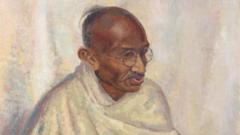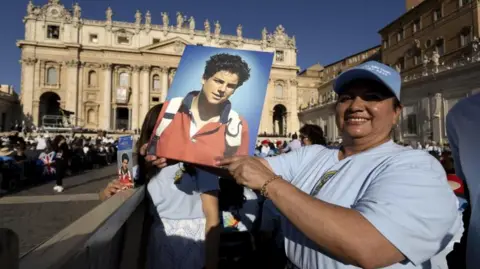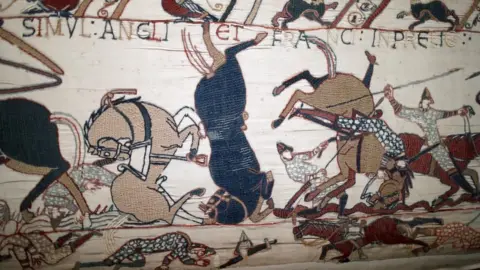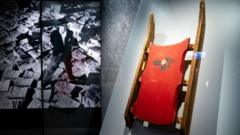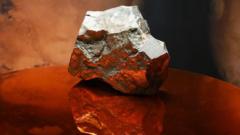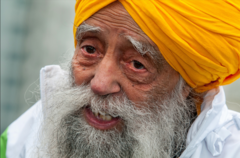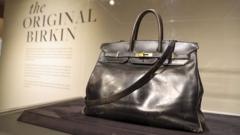Mahatma Gandhi's legacy as a leader of non-violent resistance has always resonated with the people of India, where he is celebrated as the "father of the nation." In a remarkable event next month, a rare oil portrait of Gandhi, created by British artist Clare Leighton in 1931, will be auctioned at Bonhams in London. The painting is considered unique as it is believed to be the only oil portrait for which Gandhi actually posed.
The portrait was crafted during Gandhi's visit to London for the second Round Table Conference, a pivotal meeting focused on India's constitutional reforms and self-governance aspirations. "This painting holds exceptional historical and cultural value. Its broader exposure in India and beyond would be admirable," remarked Caspar Leighton, the artist's great-nephew.
Leighton had privileged access to Gandhi, spending time sketching him at his office, an opportunity rare for artists at the time. She met Gandhi through her partner, Henry Noel Brailsford, a fervent advocate for India's independence. The portrait remained within the artist's family until her passing in 1989, after which it was inherited by her descendants.
In November 1931, Leighton exhibited her works, including this portrait, at the Albany Galleries in London. Although Gandhi did not attend, key figures from the Indian delegation were present, allowing for an enriching dialogue about the independence movement. One notable attendee was Sarojini Naidu, a prominent leader who advised Gandhi.
The impact of Leighton's work extended beyond exhibition; British journalist Winifred Holtby provided an evocative description, capturing Gandhi in his characteristic attire. Over the decades, the portrait remained mostly out of public view, save for a 1978 exhibition at the Boston Public Library.
Tragically, the painting was reportedly damaged in a violent incident involving a right-wing Hindu activist in the 1970s. After its restoration in 1974, the portrait returns to the limelight, sparking discussions about its historical significance and Gandhi's complex legacy, especially given the controversial perceptions that some factions have regarding his stance during India's communal tensions. The auction's proceeds will likely revive conversations on the cultural heritage and collective memory embodied by Gandhi's image.
The portrait was crafted during Gandhi's visit to London for the second Round Table Conference, a pivotal meeting focused on India's constitutional reforms and self-governance aspirations. "This painting holds exceptional historical and cultural value. Its broader exposure in India and beyond would be admirable," remarked Caspar Leighton, the artist's great-nephew.
Leighton had privileged access to Gandhi, spending time sketching him at his office, an opportunity rare for artists at the time. She met Gandhi through her partner, Henry Noel Brailsford, a fervent advocate for India's independence. The portrait remained within the artist's family until her passing in 1989, after which it was inherited by her descendants.
In November 1931, Leighton exhibited her works, including this portrait, at the Albany Galleries in London. Although Gandhi did not attend, key figures from the Indian delegation were present, allowing for an enriching dialogue about the independence movement. One notable attendee was Sarojini Naidu, a prominent leader who advised Gandhi.
The impact of Leighton's work extended beyond exhibition; British journalist Winifred Holtby provided an evocative description, capturing Gandhi in his characteristic attire. Over the decades, the portrait remained mostly out of public view, save for a 1978 exhibition at the Boston Public Library.
Tragically, the painting was reportedly damaged in a violent incident involving a right-wing Hindu activist in the 1970s. After its restoration in 1974, the portrait returns to the limelight, sparking discussions about its historical significance and Gandhi's complex legacy, especially given the controversial perceptions that some factions have regarding his stance during India's communal tensions. The auction's proceeds will likely revive conversations on the cultural heritage and collective memory embodied by Gandhi's image.

